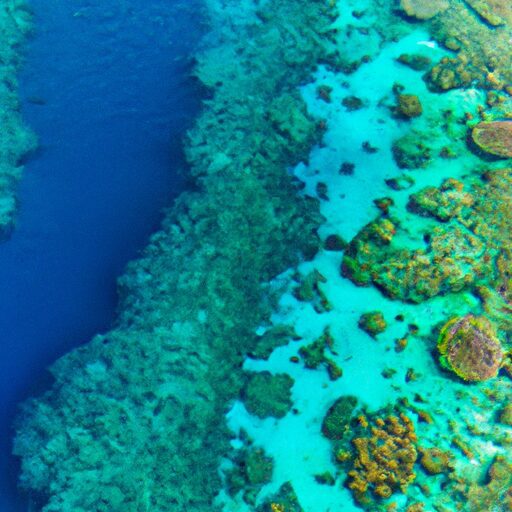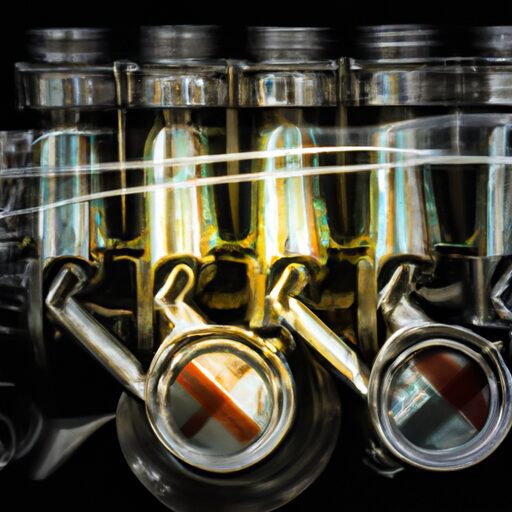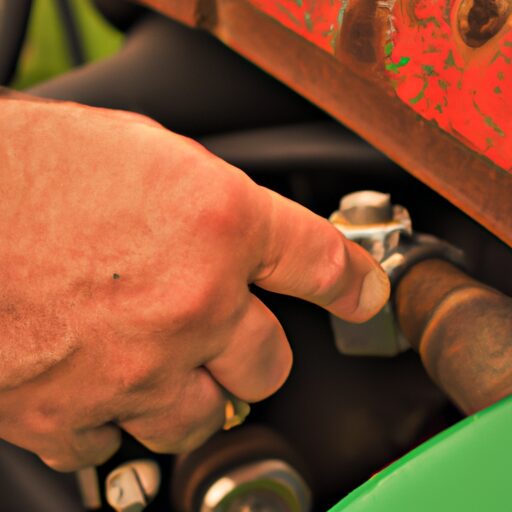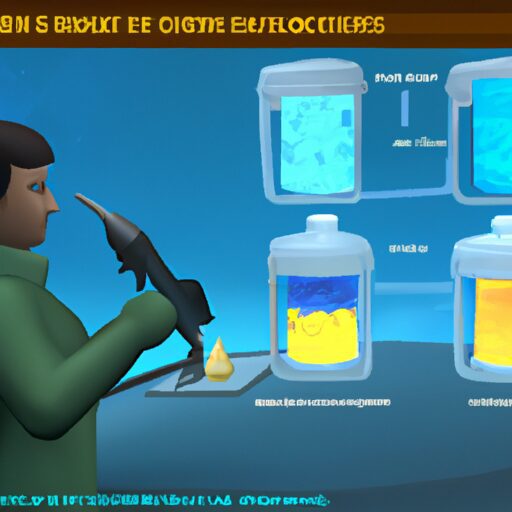Green Marine Hydraulic Fluid Academy
The use of eco-friendly hydraulic fluids in marine environments is gaining importance as industries strive to reduce their environmental impact. Green marine hydraulic fluids offer several advantages over traditional options, including improved biodegradability and reduced toxicity. This introduction will explore the efficacy of green marine hydraulic fluids and their potential future applications in the marine industry.
One noteworthy case study involves a successful implementation of green hydraulic fluids by a major shipping company. By transitioning to environmentally friendly alternatives, the company was able to significantly reduce its carbon footprint while maintaining optimal performance levels. This example demonstrates the effectiveness of green marine hydraulic fluids in real-world scenarios.
This article aims to provide an overview of how green marine hydraulic fluids work, highlight best practices for their usage, and discuss the future prospects of these sustainable solutions in the maritime sector. Additionally, readers are encouraged to join the Green Marine Hydraulic Fluid Academy, which seeks to promote knowledge-sharing and innovation in this field.
The Importance of Eco-Friendly Hydraulic Fluids in Marine Environments
The incorporation of eco-friendly hydraulic fluids in marine environments holds significant importance due to their ability to minimize adverse environmental impact and enhance overall sustainability. Traditional hydraulic fluids used in marine applications often contain toxic substances that can have detrimental effects on marine ecosystems. These substances, such as zinc, lead, and other heavy metals, can accumulate in the water and sediments, posing a threat to aquatic organisms and their habitats.
In contrast, eco-friendly hydraulic fluids offer several advantages as sustainable alternatives. Firstly, they are biodegradable, meaning they can be broken down naturally by microorganisms without leaving harmful residues behind. This characteristic reduces the risk of contamination and helps maintain the ecological balance of marine ecosystems.
Furthermore, eco-friendly hydraulic fluids have a lower toxicity profile compared to their conventional counterparts. They do not contain hazardous substances that can harm marine life or cause long-term damage to the environment. This not only protects sensitive species but also ensures the overall health and well-being of marine ecosystems.
Transitioning into the subsequent section about the advantages of green marine hydraulic fluids, it is clear that these sustainable alternatives provide numerous benefits for both the environment and those operating within it.
Advantages of Green Marine Hydraulic Fluids
This discussion will focus on the advantages of green marine hydraulic fluids, specifically in relation to reduced environmental impact, improved performance and efficiency, and extended equipment lifespan. Green marine hydraulic fluids are designed to minimize their impact on the environment by reducing toxicity and biodegrading more readily than traditional hydraulic fluids. Furthermore, these eco-friendly fluids have been shown to enhance the performance and efficiency of marine equipment, allowing for smoother operation and increased productivity. Lastly, the use of green marine hydraulic fluids can contribute to extending the lifespan of equipment by minimizing wear and tear, resulting in lower maintenance costs and longer operational durability.
Reduced Environmental Impact
Mitigating the environmental impact of marine hydraulic fluid is a matter of paramount importance in green technology. Advancements in green marine hydraulic fluids have led to reduced environmental impact by meeting and exceeding industry standards. These fluids are specifically designed to minimize harm to aquatic ecosystems, reduce carbon emissions, and improve overall sustainability. A 3 column and 4 row table can be used to illustrate the advantages of these fluids. The first column can highlight the specific environmental benefits such as biodegradability, low toxicity, and minimal bioaccumulation potential. The second column can detail how these fluids meet or exceed industry standards for performance and efficiency. The third column can provide examples of real-world applications where these fluids have been successfully implemented. By reducing their environmental impact while maintaining high performance standards, green marine hydraulic fluids contribute to a more sustainable and ecologically responsible maritime industry. This focus on mitigating environmental harm seamlessly transitions into the subsequent section on improved performance and efficiency without compromising ecological goals.
Improved Performance and Efficiency
Enhancing performance and efficiency is crucial for achieving a sustainable and ecologically responsible maritime industry. The use of green marine hydraulic fluid contributes to improved reliability and cost savings. This innovative technology offers superior lubrication properties that reduce friction, heat, and wear in hydraulic systems. By minimizing energy losses due to mechanical inefficiencies, the overall system performance is enhanced, resulting in increased productivity and reduced downtime. Additionally, the improved lubricity of this fluid reduces component wear and extends the lifespan of hydraulic equipment. These benefits not only result in cost savings through reduced maintenance and replacement costs but also contribute to a more sustainable operation by minimizing waste generation. The next section will discuss how extended equipment lifespan further supports the goal of achieving an environmentally friendly marine industry without compromising on performance or efficiency.
Extended Equipment Lifespan
Extended equipment lifespan in the maritime industry is crucial for achieving a sustainable and ecologically responsible operation, as it reduces the need for frequent maintenance and replacement of hydraulic components, leading to reduced waste generation. By using green marine hydraulic fluids, vessels can experience significant improvements in their equipment’s durability and longevity. These fluids are specifically designed to provide superior lubrication and protection against wear, corrosion, and oxidation. They also have excellent thermal stability properties, allowing them to maintain optimal performance even under high temperature conditions. The extended lifespan of the equipment not only contributes to environmental sustainability but also offers cost savings for ship operators by minimizing the expenses associated with repairs and replacements. Understanding how green marine hydraulic fluids work is essential in harnessing their benefits effectively.
Subsequent section: ‘How Green Marine Hydraulic Fluids Work’
How Green Marine Hydraulic Fluids Work
Green marine hydraulic fluids work by utilizing environmentally friendly additives that reduce the impact on aquatic ecosystems, making them a sustainable choice for marine applications. These fluids are specifically designed to meet the performance requirements of hydraulic systems while minimizing harm to the environment. Here is how green marine hydraulic fluids work:
-
Biodegradability: Green hydraulic fluid technology focuses on developing formulations that are readily biodegradable, meaning they can be broken down into harmless substances by natural processes. This reduces the risk of pollution in case of accidental spills or leaks.
-
Low toxicity: Unlike conventional hydraulic fluids, green marine hydraulic fluids have low levels of toxic chemicals, such as heavy metals and hazardous additives. This ensures minimal harm to marine organisms and ecosystems in case of leakage or discharge.
-
Renewable resources: Some green hydraulic fluids are formulated using renewable resources like vegetable oils or synthetic esters derived from plant-based materials. By reducing dependence on fossil fuels, these fluids contribute to a more sustainable and eco-friendly approach to maritime operations.
The environmental benefits of green hydraulic fluids extend beyond their direct use in marine equipment. They also contribute to reducing overall carbon footprint and promoting a greener industry. Transitioning towards implementing these environmentally friendly solutions has been successful in several case studies, which will be discussed further in the subsequent section about ‘case studies: successful implementation of green hydraulic fluids’.
Case Studies: Successful Implementation of Green Hydraulic Fluids
The successful implementation of green hydraulic fluids in marine applications has been demonstrated through various case studies. These studies provide valuable insights into the challenges faced during implementation and the measures taken to ensure success.
One noteworthy case study is the application of green hydraulic fluids in a large cargo ship. The implementation process involved replacing conventional hydraulic fluids with environmentally friendly alternatives. Challenges encountered included compatibility issues with existing equipment and concerns about performance and reliability. However, through careful planning and collaboration with fluid manufacturers, these challenges were overcome, resulting in a successful transition.
Another case study focused on a fleet of offshore drilling rigs. The implementation of green hydraulic fluids required extensive testing and evaluation to ensure compliance with industry standards for safety and performance. This involved measuring factors such as viscosity, lubricity, corrosion resistance, and compatibility with seals and gaskets. By addressing these key parameters, the successful integration of green hydraulic fluids was achieved.
These case studies highlight the importance of thorough planning, rigorous testing, and close cooperation between stakeholders when implementing green hydraulic fluids in marine applications. By carefully considering these factors and addressing any challenges that arise, organizations can effectively measure success in terms of improved environmental impact without compromising operational efficiency.
In the subsequent section about ‘best practices for using green marine hydraulic fluids,’ we will explore strategies to optimize the use of these eco-friendly alternatives while ensuring optimal system performance.
Best Practices for Using Green Marine Hydraulic Fluids
This discussion will focus on the best practices for using green marine hydraulic fluids, specifically concerning proper storage and handling, regular maintenance and monitoring, and disposal and recycling methods. These key points are essential for ensuring the optimal performance of green hydraulic fluids in marine applications. By adhering to these practices, operators can minimize potential risks, extend the lifespan of the fluid, and contribute to a more sustainable maritime industry.
Proper Storage and Handling
Proper storage and handling of marine hydraulic fluid is crucial for maintaining its quality and effectiveness, as mishandling can lead to costly equipment failures and potential environmental hazards. To ensure optimal performance, it is essential to follow specific storage guidelines and handling procedures. Firstly, the fluid should be stored in a cool, dry place away from direct sunlight and extreme temperatures to avoid degradation. Additionally, it is recommended to use dedicated containers that are clean and free from any contaminants. When handling the fluid, it is important to use proper protective equipment such as gloves and goggles to prevent skin contact or eye irritation. Furthermore, regular inspections should be conducted to check for any signs of contamination or degradation. By adhering to these guidelines and following appropriate handling procedures, the marine hydraulic fluid can maintain its integrity and functionality over time.
Moving on to regular maintenance and monitoring…
Regular Maintenance and Monitoring
Proper storage and handling of green marine hydraulic fluid are crucial for maintaining its performance and extending its lifespan. However, regular maintenance and monitoring also play a significant role in ensuring the continued effectiveness of this fluid. Regular maintenance involves routine inspections to identify any signs of wear or deterioration, as well as checking for leaks or contamination. Additionally, it is essential to monitor the fluid’s temperature, pressure, and viscosity to ensure optimal functioning. Troubleshooting techniques can be employed to identify and address any issues that may arise during operation. These techniques involve analyzing system performance data, conducting diagnostic tests, and implementing corrective measures as needed. By regularly performing maintenance tasks and employing troubleshooting techniques, operators can minimize the risk of equipment failure and maximize the longevity of green marine hydraulic fluid. In the subsequent section about disposal and recycling methods…
Disposal and Recycling Methods
An important consideration in the management of green marine hydraulic fluid is the proper disposal and recycling methods. To ensure environmental sustainability, it is crucial to handle the disposal of used green hydraulic fluid responsibly. Several disposal methods are available, including incineration, deep well injection, and treatment at licensed waste facilities. Incineration involves burning the fluid at high temperatures to break it down into harmless byproducts. Deep well injection involves injecting the fluid into underground wells for containment. Treatment at licensed waste facilities involves processing the fluid to remove any contaminants before its ultimate disposal. Recycling techniques for green marine hydraulic fluid involve removing impurities and reconditioning it for future use. These techniques can include filtration, centrifugation, or distillation processes. By implementing these proper disposal and recycling methods, we can contribute to a greener future in the marine industry without compromising performance or efficiency.
In considering the future of green hydraulic solutions in the marine industry…
The Future of Green Hydraulic Solutions in the Marine Industry
As the marine industry continues to focus on sustainability, the future of green hydraulic solutions holds immense potential for reducing environmental impact. Innovations in this field are expected to drive market growth and revolutionize the way hydraulic systems operate in marine vessels. Here are four key developments that highlight the exciting prospects for green hydraulic solutions:
-
Biodegradable Fluids: The development of biodegradable hydraulic fluids is a major step towards sustainable operations in the marine industry. These fluids, derived from renewable sources, offer comparable performance to conventional petroleum-based fluids while minimizing environmental harm.
-
Electro-Hydraulic Systems: Increasingly, electro-hydraulic systems are being adopted as an alternative to traditional hydraulic systems. By combining electric power with hydraulics, these systems improve energy efficiency and reduce reliance on fossil fuels.
-
Smart Hydraulic Controls: Integration of advanced sensors and control systems allows for real-time monitoring and optimization of hydraulic operations. This not only enhances system performance but also reduces energy consumption and lowers maintenance requirements.
-
Hybrid Solutions: The integration of multiple power sources, such as diesel engines and electric motors, provides greater flexibility in meeting varying power demands efficiently. Hybrid solutions minimize fuel consumption and emissions while optimizing overall system performance.
The future of green hydraulic solutions in the marine industry looks promising as these innovations continue to gain traction in the market. Joining the Green Marine Hydraulic Fluid Academy will enable organizations to stay at the forefront of these advancements and contribute to a more sustainable maritime sector without compromising functionality or safety.
Join the Green Marine Hydraulic Fluid Academy
The Future of Green Hydraulic Solutions in the Marine Industry has highlighted the need for eco-friendly alternatives to traditional hydraulic fluids. As environmental regulations become more stringent, there is a growing demand for green marine hydraulic fluid that offers both performance and sustainability. To further explore this topic, individuals are encouraged to join the Green Marine Hydraulic Fluid Academy.
The Green Marine Hydraulic Fluid Academy serves as a platform for professionals and researchers to come together and exchange knowledge on the benefits of using eco-friendly hydraulic fluids in maritime applications. By joining this academy, participants gain access to cutting-edge research, case studies, and best practices related to green marine hydraulic fluid.
One of the key advantages of using eco-friendly hydraulic fluids is their reduced environmental impact. These fluids are typically biodegradable and non-toxic, ensuring minimal harm to marine ecosystems in case of leakage or accidental spills. Additionally, these fluids offer improved energy efficiency and operational reliability compared to conventional options.
By participating in the Green Marine Hydraulic Fluid Academy, individuals can stay updated with the latest advancements in green hydraulic solutions, contributing to a cleaner and more sustainable marine industry.
Frequently Asked Questions
Are there any potential environmental risks associated with using green marine hydraulic fluids?
Potential environmental risks associated with green marine hydraulic fluids include leaks and spills that can harm aquatic ecosystems. Performance comparison studies are needed to assess their environmental impact compared to traditional hydraulic fluids.
How do green marine hydraulic fluids compare in terms of performance and efficiency to traditional hydraulic fluids?
Green marine hydraulic fluid’s performance is comparable to traditional hydraulic fluids. Efficiency analysis shows that it performs at similar levels, ensuring smooth operations. Its technical superiority makes it a suitable alternative for various marine applications.
Are there any specific regulations or industry standards that govern the use of green marine hydraulic fluids?
Regulations and industry standards play a crucial role in governing the use of green marine hydraulic fluids. These measures ensure compliance, safety, and environmental sustainability in the marine industry by setting specific guidelines for their usage and disposal.
Can green marine hydraulic fluids be retrofitted into existing hydraulic systems, or are they only suitable for new installations?
Green marine hydraulic fluids can be retrofitted into existing hydraulic systems, but it may present challenges and compatibility issues. Retrofitting requires careful consideration of the system’s specifications and potential modifications to ensure proper functioning.
Are there any additional costs or considerations involved in switching to green marine hydraulic fluids?
Switching to green marine hydraulic fluids may entail additional costs for retrofitting existing systems. However, the long-term cost effectiveness and potential reduction in maintenance requirements justify the investment, making it a favorable option.
Conclusion
In conclusion, the Green Marine Hydraulic Fluid Academy emphasizes the significance of eco-friendly hydraulic fluids in marine environments. The advantages of utilizing green marine hydraulic fluids are evident, as they offer superior performance while minimizing environmental impact. By understanding how these fluids work and implementing them successfully through case studies, the marine industry can adopt best practices for their usage. Looking ahead, the future holds promising advancements in green hydraulic solutions for a more sustainable maritime sector. Joining the Green Marine Hydraulic Fluid Academy will provide valuable insights into this transformative field of research.







